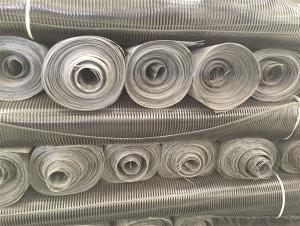Many have been fascinated by geotextiles, which are an integral part of modern civil engineering. When we consider woven and nonwoven geotextiles, we enter into an unconventional textile world. These fabrics are not meant for mere fashion or home decor; they are made to interact with the soil and structures in a way that improves stability and performance.
The Two Sides of Geotextiles
There are two main types of geotextiles: woven and non-woven. The woven version is fabricated through interlacing two sets of yarns at right angles to create a fabric with consistent pattern. It is known for its high tensile strength and durability. On the other hand, nonwoven geotextiles are manufactured from定向 or randomly arranged fibers held together by friction, chemical or heat treatment. They weigh less, flexible hence suitable for various applications where drainage and filtration are necessary.
Woven Geotextiles Prevents Time Waste
When tensile strength is highly demanded in a project then woven geotextile becomes the best choice. Its structured weave provides more stiffened fabric that can sustain against heavy loads and rough environments. Woven geotextiles can be used to reinforce roadbeds or offer support for retaining walls amongst other things. This kind of interweaving makes it also possible for them to assume dimensional stability far beyond any other variety.
Non-Woven Geotextiles Serve Multiple Purposes
By contrast, non-woven geotextile has fiber arrangement that is random in nature. Due to this feature they work excellently when water needs to get through while soil particles remain behind thus making them ideal materials for filtration purposes. In addition, their weightlessness makes them easier to handle and install which is important in large-scale projects as well as some others such as drainage filters.
More Than Meets The Eye
Despite being mainly used in the field of civil engineering, geotextiles have other applications. In landscaping, they can be helpful for water management and soil stabilization to ensure that plants are provided with the right environment for growth. On the other hand, they can facilitate better crop growing conditions thus increasing agricultural output and reducing chemical use.
Geotextiles: Love Them or Hate Them?
The innovation embodied in geotextiles has always held a special place in my heart as an engineer. There is something deeply satisfying about seeing a product that has been designed to work harmoniously with nature. How woven geotextile do not move from their position while nonwoven one conform to the shape of land; it is just an example of human creativity and aspirations towards a more sustainable world.
Environmental Concerns
The environmental impact of using geotextiles should also be taken into account. The materials used and production methods may differ though they help promote eco-friendly building practices. Geotextiles made from recycled or biodegradable components should be chosen to minimize the ecological footprint in this respect.
The Future of Geotextiles
This article looks at the future of geotextiles. The expectation is that, with advances in materials science and engineering, geotextiles will become even stronger, flexible and eco-friendly. In this area still a lot can be done in terms of innovation which is encouraging given that new uses and improvements are waiting to be made.
In Conclusion
Geotextiles are woven or non-woven fabrics; they represent the unsung heroes of modern infrastructure. Sometimes unseen but always impactful. These will surely feature significantly more in the future as construction and engineering continue achieving the seemingly impossible. Personally, I think it’s an exciting field to be part of, and let us see where it goes from here.







